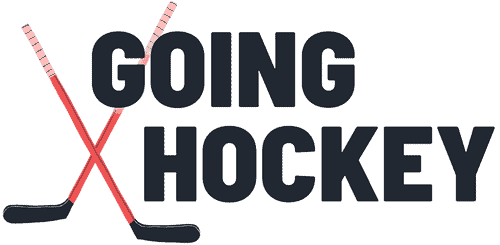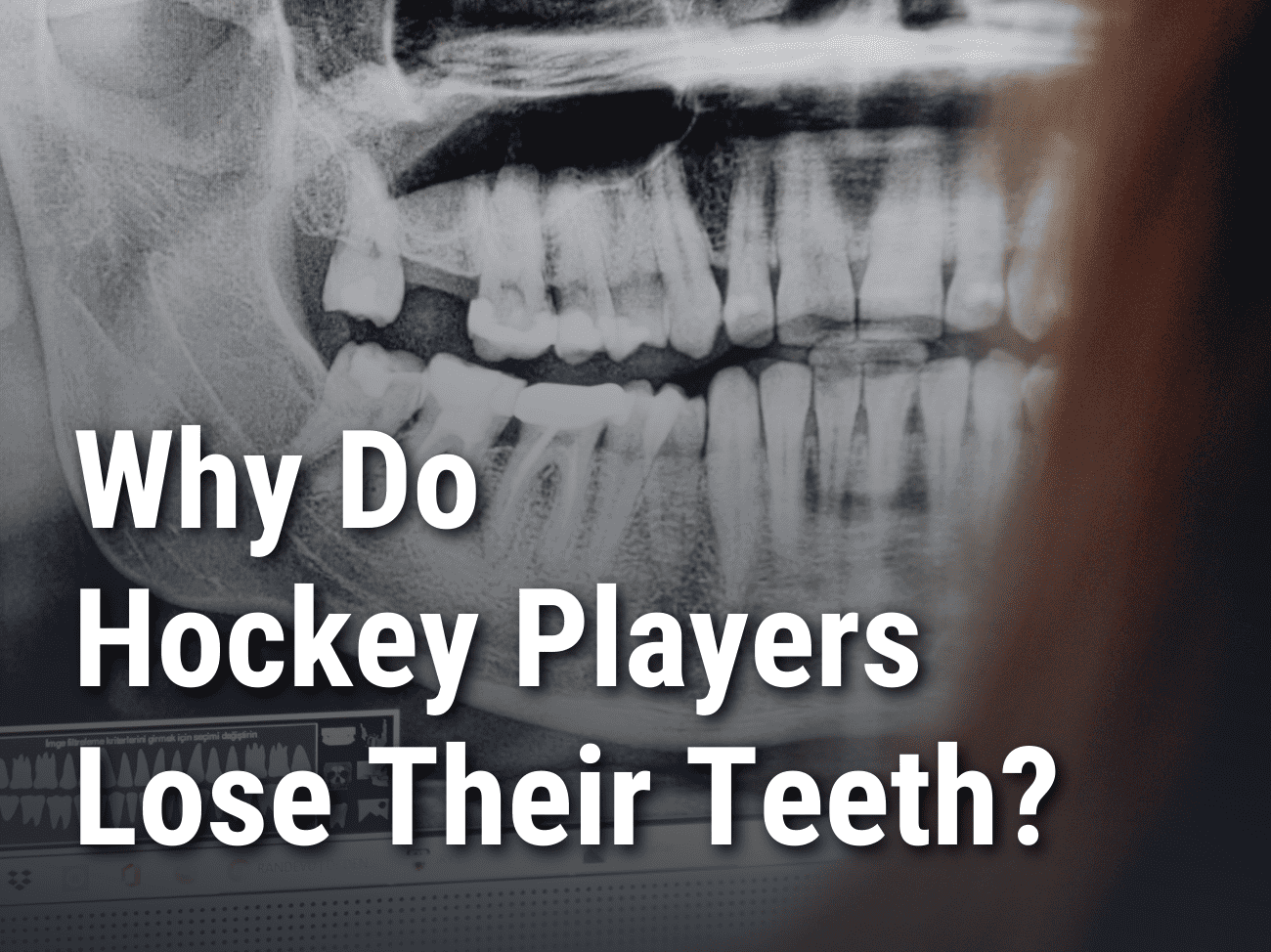Hockey, known for its fast-paced action and physical nature, has long captivated fans with its thrilling displays of skill, speed, and sheer toughness. However, one particular aspect of the sport is the sign of missing teeth among its players. Why do hockey players lose their teeth?
Why hockey players lose their teeth – main reasons:
- Puck impacts
- High sticks
- Board impacts
- Punches
Although there’s no way to completely eliminate the risk of losing teeth, by understanding where and when you are at a heightened risk can decrease the chances of you losing teeth while playing hockey.

Why Do Hockey Players Lose Their Teeth?
Hockey players commonly lose their teeth due to the physical nature of the sport. The fast-paced and contact-intensive nature of ice hockey can lead to various types of accidents and collisions, resulting in dental injuries. Here are a few common ways hockey players may lose their teeth:
Puck Impacts
One of the most common ways that players lose their teeth is by taking a puck to the mouth.
Although a hockey puck isn’t large, it’s still 6 ounces of solid rubber. And when that rubber is hurled at 80-100mph at a player’s mouth, it can cause a lot of damage.

How to Not Lose Your Teeth
Although puck impacts can happen anywhere in the game, there are certain situations where there is a heightened risk of taking a puck to the face. Being cautious within these key situations can lower the chances of losing teeth.
Here are some tips on how to avoid losing your teeth to puck impacts in hockey:
- Cover your face with your glove when blocking shots.
- Be aware of when the opposing team’s defender is shooting from the blue line.
- Avoid angling your stick blade towards your face.
My Dad once took a deflected slap-shot to the mouth while playing D, which ended up chipping his front tooth in half.
High Sticks
High sticks are another common way in which hockey players lose their teeth.
Although high sticks are the most common way that players get hit in the face, usually the impact isn’t hard enough to knock out teeth. In some cases though, if the stick is swung hard enough, and placed just right, it can knock a player’s teeth out.

How to Not Lose Your Teeth
High sticks are similar to puck impacts in that they can happen almost anywhere within the game. The most likely scenario for losing teeth to a high stick is when you are engaged in a battle for the puck, usually a corner battle.
Either, the opposing player goes to lift your stick, misses, and catches you on the upswing, or, the opposing player attempts to bring their stick from one side of your body to the other – over your head – and ends up hitting you in the face.
Here’s how to avoid losing your teeth to high sticks in hockey:
- Be aware of which players have stick control, and which don’t.
- Avoid playing with aggressive beginners.
- Keep your face as far away from the ice level as possible (if playing casually).
One time, in pick-up hockey, my brother took a high stick to the mouth which caused one of his canines to puncture a hole through his bottom lip.
Board Impacts
Board impacts are another way that hockey players lose teeth.
In this scenario, it is almost always the case that a player makes an illegal check – for example, a “hit from behind” – and forces the other player’s face into the boards. Although this is a rather rare scenario, it does occasionally happen.

How to Not Lose Your Teeth
It’s rare that a player loses their teeth to board impact, but it can happen. Usually, the only way this happens is if an opposing player illegally checks you from behind, forcing your face to collide with the boards.
Here’s how to avoid losing your teeth to board impacts in hockey:
- Avoid putting yourself in a vulnerable position (i.e., off balance, face against the boards)
- Be prepared to get hit from behind – even if it’s illegal.
- Take note of the hotheads on the other team.
Punches
The final way – the rarest way – that a hockey player loses their teeth is via a punch in a fight. It’s pretty rare that a player would get punched cleanly, squarely in the mouth. But with a strong enough punch, a player can end up losing teeth.

Why Don’t Hockey Players Fix Their Teeth
Hockey players often have a reputation for missing or damaged teeth, and there are a few reasons why they may choose not to fix them immediately or opt for dental procedures:
- Injuries during gameplay
- Hockey is a physical and fast-paced sport, and players are at risk of various injuries, including facial injuries that can lead to broken or knocked-out teeth. When injuries like these occur, players’ immediate concern is typically to get back into the game rather than prioritize dental procedures.
- Cost and time
- Dental work can be expensive and time-consuming. Hockey players may not always have the financial means or the time to undergo extensive dental procedures while they are actively competing. Additionally, they may prioritize other aspects of their career, such as training and gameplay, over cosmetic dental work.
- Cultural norms and identity
- Some hockey players view missing or damaged teeth as a badge of honor or a symbol of toughness. It has become a part of the sport’s culture, and players may feel that fixing their teeth would compromise their identity as hockey players. The “hockey smile” has even become somewhat iconic in the sport.
- Redundancy
- If you play hockey long enough, you’re bound to get hit in the face. And if you’re a professional player – who is constantly playing the game – the chances of incurring a facial injury are even higher. I.e., even if you did get your teeth replaced, they may just get knocked out again. Thus, some players may see it as pointless to replace their teeth, at least until they retire.
It’s important to note that not all hockey players choose to leave their teeth untreated. Many players do undergo dental procedures to repair or replace missing or damaged teeth. The decision to fix or not fix teeth is ultimately a personal one, influenced by various factors such as personal preferences, financial considerations, and the player’s career stage.
Do Mouthguards Protect Teeth?
Mouth guards are designed to protect teeth and the surrounding structures during sports activities, including hockey. Mouth guards are protective devices made of a flexible material, usually thermoplastic, that fit over the upper teeth. They act as a cushion to absorb and distribute the forces that may occur during impact, helping to prevent dental injuries.

Here are some ways in which mouthguards provide protection:
- Preventing tooth fractures and breakage
- Mouth guards act as a barrier between the upper and lower teeth, reducing the risk of direct impact and fractures. They absorb and distribute the forces of a blow, preventing teeth from hitting each other or hitting other hard surfaces.
- Minimizing tooth displacement or avulsion
- Mouth guards help stabilize the teeth, reducing the risk of tooth displacement (when a tooth is pushed out of its position) or avulsion (complete tooth loss). By providing a cushioning effect, they can absorb and dissipate the energy from a forceful impact.
- Protecting soft tissues
- In addition to teeth, mouth guards also protect the soft tissues in and around the mouth, including the lips, cheeks, and tongue. They help minimize the risk of lacerations and other oral injuries.
- Absorbing and redistributing impact forces
- Mouth guards absorb and distribute the energy from a blow across a larger surface area. This helps reduce the intensity of the force transferred to the teeth, minimizing the risk of dental trauma.
It’s important to note that while mouthguards provide a significant level of protection, they may not completely eliminate the risk of dental injuries. However, they are still widely recommended and endorsed by dental professionals and sports organizations as an important safety measure for athletes participating in high-risk sports like hockey.
Why Are Mouthguards Only for Top Teeth?
Mouth guards are primarily designed to protect the upper teeth because they are more vulnerable to impact during sports activities. The upper teeth generally protrude slightly further forward than the lower teeth, making them more exposed and susceptible to direct blows. Therefore, focusing the protection on the upper teeth is considered more crucial in reducing the risk of dental injuries.

Here are a few reasons why mouthguards typically cover the top teeth:
- Impact absorption
- The upper teeth are more likely to come into direct contact with objects, equipment, or other players during sports activities. By covering the upper teeth, the mouth guard acts as a cushioning barrier, absorbing and distributing the impact forces more effectively.
- Lower jaw mobility
- The lower jaw has a greater range of movement compared to the upper jaw. Placing the mouth guard on the upper teeth allows for comfortable jaw movement and proper alignment while providing adequate protection.
- Speech and breathing
- Placing the mouth guard on the upper teeth allows for better clarity of speech and less interference with breathing. The lower teeth usually have a slightly different shape and alignment, which can affect speech and comfort if a mouth guard is placed on them.
That said, there are instances where lower mouth guards or full-coverage mouth guards that protect both upper and lower teeth are used. These options are more commonly used in specific sports or for individuals with specific dental conditions or jaw alignments that require additional protection or support.


Leave a Reply